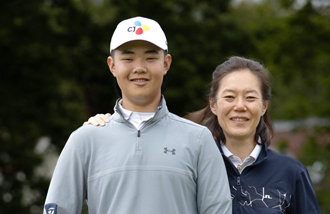Restoration of traditional Seoul gate
Restoration of traditional Seoul gate
Posted December. 11, 2012 06:07,
Hanyang, the capital of the Joseon Dynasty and now called Seoul, was a planned city designed by Jeong Do-jeon, one of the dynasty`s founding contributors, based on the yin-yang and five elements theory. The walls surrounding the capital reflected Confucianism, the basic ideology of the dynasty, and the theory of benevolence (信), righteousness (義), propriety (禮), wisdom (知) and sincerity (信). The main gates to the capital - Heunginmun (興仁門), Dongeuimun (敦義門) and Sungnyemun (崇禮門) -- have benevolence, righteousness, and propriety in their names. The bell tower Boshingak (普信閣) bears the meaning of sincerity. The three gates and Sookjeongmun, or "north gate," comprise the four main gates of the capital.
The west gate is Dongeuimun, which was named by Jeong and means doing ones best to achieve righteousness. It was first built near todays Sajik tunnel in 1396 and later relocated to Shinmunro-2ga in Seoul`s Jongno district in 1422. King Seonjo used the gate to flee to Euiju when Japan invaded the Korean Peninsula in 1592. The gate was lost over the course of the invasion but reconstructed in 1711. Japanese colonial rule resulted in its removal again to double track trams in 1915.
According to "The Annals of the Joseon Dynasty," the gate was supposed to be built in front of the home of Lee Sook-beon, a Joseon founding member. He insisted on a small valley in front of Indeok Palace, where the presidential office stands today, where King Jeongjong lived and changed the location. Lee did not want to have a gate where people and coaches would pass in front of his house. This was a classic example of a location change for a public project because of personal interest. Lee recklessly wielded power only to live out his life in exile. Still, people called the gate new gate or Shinmun, and todays Shinmunro (street) got its name from the gate.
After the walls of Hanyang were put on the tentative list of the UNESCO World Heritage, discussion began over rebuilding Dongeuimun, which is the only one of the four main gates that has yet to be restored. If put on the tentative list, the gate is qualified to get on the formal list a year later, which means a high likelihood of making it on the list. The walls have a 600-year history with harmony with the mountain and plain. If Dongeuimun is restored as Sungnyemun was, which was massively damaged due to an arson attack in 2008, Korea will have back its four main gates and greatly raise the value of the castle of Hanyang. The restoration of Dongeuimun should be seriously considered.
Editorial Writer Chung Sung-hee(shchung@donga.com)







